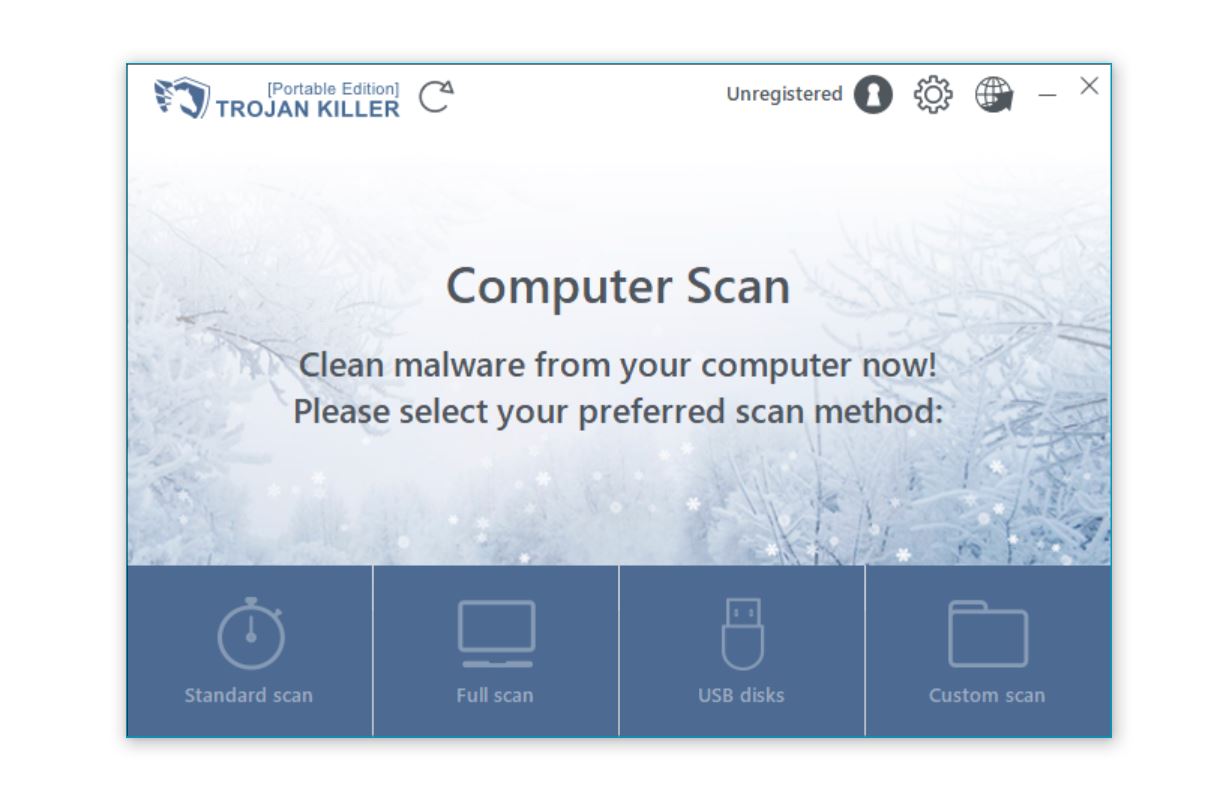Physical Address
Lesya Kurbasa 7B
03194 Kyiv, Kyivska obl, Ukraine
Physical Address
Lesya Kurbasa 7B
03194 Kyiv, Kyivska obl, Ukraine

PipeMagic is a sophisticated backdoor trojan that provides attackers with unauthorized access to infected systems. This comprehensive guide provides detailed technical analysis, distribution methods, removal instructions, and prevention strategies for those affected by this dangerous threat. By following our step-by-step methodology, you’ll learn how PipeMagic operates, how to safely remove it from your system, and how to prevent future infections.
| Common Names |
|
| Type | Backdoor, Trojan, Remote Access Tool |
| First Detected | 2022, with ongoing evolution and campaign expansion |
| Platforms Affected | Windows 7, Windows 8.1, Windows 10, Windows 11 |
| Infection Level | Critical – provides complete system access to attackers |
| Data Risk | Severe – potential data theft, additional malware deployment, surveillance |
| Distribution Methods | Fake ChatGPT applications, phishing emails, exploited vulnerabilities, malicious websites |
| Geographic Targeting | Originally Asia, now expanded to Middle East, Americas, and Europe |
PipeMagic is a sophisticated backdoor trojan first identified in 2022. Initially targeting organizations in Asia, it has since expanded its operations to the Middle East, North and South Americas, and Europe. This modular malware is designed to create a “backdoor” into compromised systems, allowing threat actors to gain unauthorized access, steal sensitive data, and deploy additional malicious payloads.
What makes PipeMagic particularly dangerous is its ability to establish persistent connections to command and control servers, enabling attackers to maintain long-term access to compromised networks. In a notable campaign uncovered by security researchers, PipeMagic was distributed disguised as a ChatGPT application, demonstrating the threat actors’ ability to adapt to current technology trends to maximize infection rates.
According to GridinSoft’s threat research, backdoor malware like PipeMagic poses a significant risk because it typically operates silently, with victims often unaware of the infection until data breaches or additional malware deployments occur.
Backdoor trojans like PipeMagic are designed to operate covertly, making detection challenging. However, the following symptoms may indicate a PipeMagic infection:
It’s important to note that these symptoms can also be caused by other issues, so a thorough security scan is necessary to confirm a PipeMagic infection.
Source: GridinSoft Threat Research, analysis of PipeMagic infection chain
PipeMagic employs various distribution methods to infiltrate systems, including:
In a notable campaign, threat actors distributed PipeMagic disguised as a ChatGPT application. Users who downloaded and installed the fake application were met with a blank interface while PipeMagic was silently deployed in the background. This technique exploits the popularity of AI tools to trick users into installing malware.
PipeMagic operators actively exploit vulnerabilities in legitimate software and processes to gain initial access to systems. This can include:
Traditional phishing techniques remain effective distribution vectors for PipeMagic. These can include:
Unofficial software sources, cracked software distribution channels, and compromised third-party repositories may unknowingly distribute PipeMagic alongside seemingly legitimate applications.
For security researchers and system administrators, here are the technical aspects of PipeMagic:
PipeMagic employs a modular design that allows threat actors to deploy specific capabilities as needed:
PipeMagic has been linked to several other malicious tools used by the same threat actors:
Removing PipeMagic requires a systematic approach to ensure all components are eliminated from your system. Follow these comprehensive removal steps:
Trojan Killer is specifically designed to remove sophisticated malware, including backdoor trojans like PipeMagic:

Warning: Manual removal of sophisticated backdoors is challenging and should only be attempted by users with advanced technical knowledge. For most users, automated removal tools like Trojan Killer are recommended.
Check these common locations for PipeMagic components:
# Run these commands in PowerShell as Administrator# Remove suspicious files from common locationsRemove-Item -Path "$env:TEMP\*.exe" -Force -ErrorAction SilentlyContinueRemove-Item -Path "$env:APPDATA\*.exe" -Force -ErrorAction SilentlyContinueRemove-Item -Path "$env:LOCALAPPDATA\Temp\*.exe" -Force -ErrorAction SilentlyContinueRemove-Item -Path "C:\ProgramData\*.exe" -Force -ErrorAction SilentlyContinue# Look for ChatGPT-related fake applicationsRemove-Item -Path "$env:LOCALAPPDATA\ChatGPT*" -Recurse -Force -ErrorAction SilentlyContinueRemove-Item -Path "$env:APPDATA\ChatGPT*" -Recurse -Force -ErrorAction SilentlyContinueRemove-Item -Path "C:\Program Files\ChatGPT*" -Recurse -Force -ErrorAction SilentlyContinueRemove-Item -Path "C:\Program Files (x86)\ChatGPT*" -Recurse -Force -ErrorAction SilentlyContinue |
PipeMagic creates registry entries to maintain persistence. Clean these with caution:
# Run in PowerShell as Administrator# Export registry backup firstreg export HKLM backup-hklm.regreg export HKCU backup-hkcu.reg# Remove common persistence registry entriesGet-ItemProperty -Path "HKCU:\Software\Microsoft\Windows\CurrentVersion\Run" | ForEach-Object { if ($_.PSObject.Properties.Name -match "ChatGPT|updater|syshost|winlogon") { $propName = $_.PSObject.Properties.Name -match "ChatGPT|updater|syshost|winlogon" Remove-ItemProperty -Path "HKCU:\Software\Microsoft\Windows\CurrentVersion\Run" -Name $propName -ErrorAction SilentlyContinue } }# Check for scheduled tasksGet-ScheduledTask | Where-Object {$_.TaskName -match "ChatGPT|updater|syshost|winlogon"} | Unregister-ScheduledTask -Confirm:$false |
After removing PipeMagic, perform these additional security steps:
If you’re concerned about potential data breaches or identity theft resulting from a PipeMagic infection, our comprehensive malware removal guide provides additional steps for securing your digital identity.
To protect your systems against PipeMagic and similar backdoor trojans, implement these preventive measures:
Organizations should also consider implementing network monitoring solutions to detect unusual outbound connections that might indicate backdoor communications. For more information on securing your systems against advanced threats, see our guide on router security against malware.
PipeMagic is a high-severity threat due to its comprehensive backdoor capabilities. Once installed, it provides attackers with virtually unrestricted access to the infected system, allowing them to steal sensitive data, monitor user activities, and deploy additional malware such as ransomware. The backdoor’s modular nature makes it particularly dangerous, as attackers can expand its functionality over time. Additionally, PipeMagic has been linked to sophisticated threat actors who deploy other dangerous tools like Cobalt Strike and NOKOYAWA ransomware, indicating a level of expertise that makes this threat especially concerning. Organizations infected with PipeMagic should consider it a serious security incident requiring immediate response and remediation.
Detecting PipeMagic can be challenging due to its stealthy design, but several indicators may suggest an infection. Look for unexpected network connections to Microsoft Azure servers, unusual system slowdowns, or security solutions being disabled without your action. If you’ve recently installed a ChatGPT application that displayed a blank interface, you should be particularly suspicious. The most reliable detection method is to run a comprehensive scan with specialized security software like Trojan Killer, which can identify PipeMagic’s components even when they’re hidden. For organizations, network monitoring tools might detect the backdoor’s command and control communications. If you notice any suspicious activities, disconnect from networks immediately and perform a thorough security scan.
Yes, PipeMagic has the capability to steal passwords, banking information, and other sensitive data. As a backdoor trojan, it provides attackers with access to your system, allowing them to monitor your activities, capture keystrokes, access stored credentials, and even deploy additional password-stealing malware. The backdoor can access browser data, including saved passwords and autofill information for banking sites. Additionally, attackers can use screen capture functionality to record banking sessions or deploy form-grabbing modules that intercept data before encryption. If you suspect a PipeMagic infection, you should immediately change all passwords from a clean device, enable multi-factor authentication where possible, and contact your financial institutions to monitor for suspicious activities.
A factory reset is not always necessary after a PipeMagic infection, but it is the most definitive way to ensure complete removal. Professional security tools like Trojan Killer can effectively remove PipeMagic in most cases. However, if the system is critically important (containing sensitive data or used for financial transactions), or if the infection persists after multiple removal attempts, a factory reset provides the highest level of certainty. Before performing a reset, back up all essential data (after scanning it for malware) and make note of installed applications. For corporate environments, security teams might prefer to reimage infected systems according to organizational policies. For more information about factory resets as a malware removal strategy, see our article on whether factory reset removes viruses.
PipeMagic represents a significant threat in today’s cybersecurity landscape, particularly due to its sophisticated backdoor capabilities and association with additional malware payloads like NOKOYAWA ransomware. Its distribution through fake ChatGPT applications demonstrates how threat actors continuously adapt their tactics to exploit current trends and user interests.
The modular nature of PipeMagic makes it a versatile tool for attackers, allowing them to expand functionality and maintain persistent access to compromised systems. This underscores the importance of implementing robust security measures and maintaining vigilance against evolving threats.
By understanding how PipeMagic operates and following the removal steps outlined in this guide, you can effectively eliminate this backdoor from your system. However, prevention remains the best strategy – obtaining software only from official sources, keeping systems updated, and using reliable security solutions like Trojan Killer will significantly reduce your risk of infection.
If you suspect your system has been compromised by PipeMagic or any other backdoor trojan, take immediate action to contain the threat and protect your sensitive data. The longer such malware remains on your system, the greater the potential damage to your digital security and privacy.